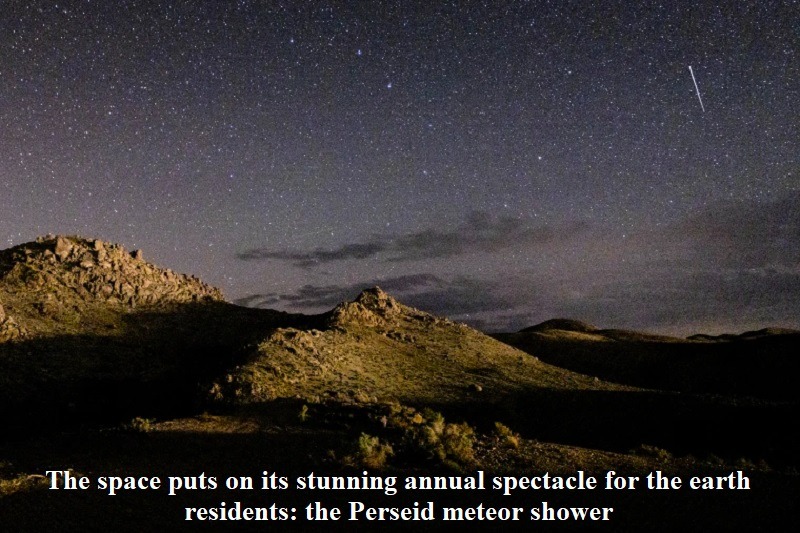
The annual Perseid meteor shower has once again graced the skies with its breathtaking display for Earth’s residents. This spectacular meteor shower, known as the brightest of the year, commenced on July 14 and will continue its celestial show until September 1. The peak of this dazzling event is set to occur during the nights of August 11, 12, and 13.
The prime hours for optimal meteor gazing fall between midnight and the early hours just before dawn. Even earlier, around 10:00 PM, the first gleams of meteors may grace the sky if it remains clear, irrespective of your local time zone, according to a TIME magazine report.
Enthusiasts anticipating this event can expect to witness up to an impressive 100 meteors per hour, a truly awe-inspiring celestial phenomenon. However, individuals residing in urban areas may unfortunately miss this celestial spectacle due to light pollution.
The Perseid meteor shower is a result of Earth’s path intersecting with the remnants of the comet Swift-Tuttle, comprised of a mixture of ice, rock, and dust. This comet, which was discovered in 1862, owes its name to the simultaneous and independent findings of Horace Tuttle and Lewis Swift. Swift, an avid amateur astronomer from California, observed the comet racing past Earth on July 15. Subsequently, on July 18, distinguished Harvard astronomer Horace Tuttle also detected the celestial wanderer. This dual discovery led to the comet being named Swift-Tuttle, in honor of both astronomers.
This comet, exceeding a diameter of 26 kilometers (approximately 16 miles), is notably larger than the asteroid often associated with the extinction of the dinosaurs, doubling the asteroid’s size. Swift-Tuttle embarks on a 133-year journey through various cosmic realms, including deep space, the orbits of inner planets, and the intricate circuitry of the solar system, with its return being cyclical.
Although Swift-Tuttle’s last remarkable close encounter with Earth occurred in 1992, its legacy endures, contributing to the annual spectacle of the Perseid meteor shower, a dazzling event that captivates observers and adds a touch of cosmic wonder to the night sky.

Post Your Comments